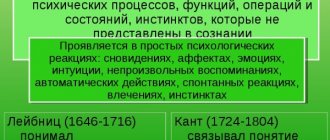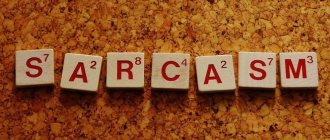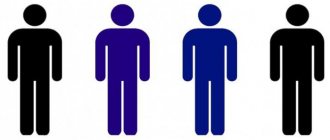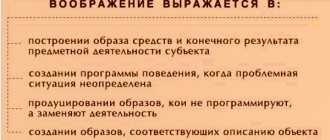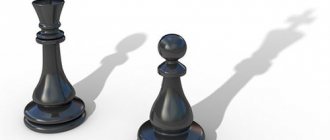The collective unconscious is mysterious by its nature, it expresses itself through many forms: dreams, myths and tales, this or that behavior in situations, premonitions, or when a person decides to engage in some new activity and his hands seem to recognize this “doing” . The sages correctly said: “All the answers are in you!”
What is the collective unconscious
According to Jung's theory in psychology, the collective unconscious is one of the layers or layers of the subconscious. To put it another way, this is an information field that contains a large amount of different data. What forms the structure of the collective unconscious according to Jung? Life experience, but not of each individual person, but of the entire society.
Jung himself described this concept as follows: “The collective unconscious is one of the forms of the unconscious, common to society as a whole and is a product of inherited brain structures.” Unlike the individual unconscious, the collective is common to all people who have lived and are living on the planet, regardless of their life experience or history. In essence, this is a kind of common denominator that unites people who are radically different from each other.
According to the scientist, the collective unconscious represents information from the mental world accumulated over the millennia during which humanity has existed. The individual unconscious is information from the mental world of a particular person.
We explain the terms
Bad consciousness is a state in which there are many attachments. That is, a person is attached to some judgments, which forms an automatic reaction to events. For example, a person is used to sitting in his favorite seat during lectures, and if someone takes it, he becomes very irritated. In most cases, people are attached to property, so they worry a lot and are capable of bad, unreasonable actions. If a person’s consciousness and subconscious is defiled, then he loses his mental abilities, which is comparable to animals. Such a person becomes aggressive and satisfies only his own needs without doing anything new.
Obsessions are strong sensory and emotional experiences of a person that have a deep meaning. It’s not difficult to understand, you can imagine some kind of obsession that was created by a person’s emotions, this is what torments a person’s mind. These can be sudden attacks of aggression, jealousy, love and panic; they are mental responses to certain life events.
Therefore, such people are controlled by emotions, their prism of consciousness through which information passes is distorted and has gone towards obsession. As a result, a person can no longer perceive information soberly; he begins to see only what he wants, only what his obsessions dictate. Quite often, the ego of the person himself plays the role of obsession.
Therefore, only pure consciousness will be free from any obsessions and attachments. Having such a mind, a person is able to use the capabilities of the mind to the maximum, this will help him correctly assess the situation and determine the most effective actions. Here the person uses other motives and values than his ego.
Pure consciousness is hard work consisting of three stages of progress:
1).Expansion. That is, a person understands the true value of things, correctly evaluates the motives of certain events;
2).Concentration. Human consciousness gains power that will influence the consciousness of other people and help manipulate their actions;
3).Cleanliness. Each person is capable of purifying the consciousness and subconscious of another.
Of course, people's consciousness is actively developing. This can be especially noticeable when they set a goal, and it’s better if there are a lot of goals. But when life consists of eating, resting, sleeping and having fun, then consciousness begins to slow down, a person’s joy in life fades away, he becomes uninteresting, boring and dull. Of course, such an ending will not suit anyone.
History of the discovery of the concept
As stated above, the author of the idea of the collective unconscious is Carl Gustav Jung, a Swiss psychoanalyst. He was the most famous and at the same time the most controversial student of Sigmund Freud. His theory is just as controversial, but no less interesting.
The first mention of the doctrine of the collective unconscious was in 1916 in Jung's article “The Structure of the Unconscious.” It was about Freud's research on dreams. In them he discovered some elements that were not 100% part of the individual unconscious, but were reminiscent of the collective nature of man. These very elements were called pro-fantasies, archaic remnants. Freud also spoke of them as inherited mental predispositions, archaic legacies of the past and inherited patterns.
In one of his works, Freud said that a person’s mental life largely depends not only on what he personally experienced. It is influenced by the elements acquired at birth, the heritage of society.
Manifestation among the Russian people
It is important to understand that this phenomenon concerns not only any group of people, but also an entire nation. The design bureau of the Russian nation has a personal archetype of the Fatherland. If you follow the ancient wisdom of the Cossacks, then the Fatherland is a gift from our fathers, grandfathers and great-grandfathers. This is our land, country and Motherland. The Fatherland is everything and even more, accumulated from ancient times right up to the present day.
The Russian people are ready to fight and die for their Motherland, this is evidenced by the legacy of patriotism. Historically, the Fatherland of Russians can only belong to the imperial one. Thanks to this archetype, the tsarist empire gained power and became the Soviet one.
The system of collective unconsciousness may constitute a reflection of human nature. In the event of the destruction of collective unconscious archetypes, it may happen that disturbances occur in the people’s psyche. And vice versa, if the people adhere to their traditional culture, then the psyche of the nation will normalize. Therefore, according to C. G. Jung, the distortion of archetypes will lead to the death of the mental health of the nation.
Characteristics of the collective unconscious
In 1936, Carl Jung gave a talk on “The Concept of the Collective Unconscious” at the Abernethy Society in England. In it, he endowed the concept with a number of characteristics:
- It does not develop individually, but is inherited.
- It consists of so-called archetypes or models and patterns of instinctive behavior.
- It also consists of similar patterns of behavior that are equally present in all people.
- The collective unconscious is identical for every person. This means that we can call it the basis of the mental life of all humanity as a whole.
- Has mythological elements.
- Consists of individual images that have no racial or blood differences. They belong to everyone living on the planet.
- The collective unconscious is a kind of repository of memories of the distant past. It cannot be controlled or changed by willpower.
And one more fact - the collective unconscious is activated only in large groups of people. This leads to general madness, which results in revolutions and wars.
Archetypes of the collective unconscious
According to Jung, archetypes help a person get comfortable in the outside world. There are 3 main behavior patterns:
- chaos - the desire to fight;
- order, neutrality - the desire for order, cooperation;
- harmony - prosperity, harmonious relationships, beauty.
There are also several archetypes that determine how a person will live and the tactics of his behavior in certain situations:
- Anima, Animus - feminine and masculine principles.
- The shadow is a part of the psyche hidden and protected by the unconscious;
- Hero - activates in dangerous situations.
- A wise old man is a mentor, one who teaches and educates.
- Trickster is an archetype associated with cunning and deceit.
And, perhaps, the most important archetype is the person. It is a mask that a person puts on in order to appear before society.
Examples of the collective unconscious
In real life, the concept of the collective unconscious manifests itself in 2 forms of behavior of people who are part of the crowd:
- An association. Thanks to the same emotional state or ideas, a disparate crowd becomes one. This happens, for example, at rallies or at religious meetings.
- Disconnection. In this case, the collective unconscious makes you panic and create chaos. People are under stress and cannot make adequate decisions. The main thing they want to do is survive. From the outside it seems that the person is simply not himself.
Surely you have encountered both manifestations of the collective unconscious in your life.
How to train mindfulness correctly? Short recommendations
You cannot become more aware in just one day or even in a week - this is a long process of rebirth, which requires giving up some habits and changing life priorities, therefore:
- Stop being distracted. A person of low awareness is characterized by the inability to be unoccupied. He constantly needs to fill his free time with understandable entertainment - surfing the Internet while traveling on public transport, eating while watching his favorite TV series, drinking alcohol to make it easier to “find a common language”, virtual communication instead of real communication, etc. These are little things, but, as you know, all life consists of little things. Refusing or reducing the above-mentioned entertainment will allow you to significantly increase your awareness, and with it your quality of life.
- Look for your equipment. If meditation is not suitable for you, listen to mantras, practice self-awareness exercises or breathing exercises. If you can’t do this at home, try working on yourself while sitting in line at the clinic, standing at the checkout, or while driving in a traffic jam.
- Do not give up. If it seems to you that the exercises are not bringing results, give yourself a little more time. The human psyche is not a computer. It cannot be rebuilt with just a few actions. Be methodical and persistent.
- Ask for help. If you understand that your emotions are getting the better of you and you cannot reach a new level of self-awareness on your own, ask for help. You can make an appointment with a psychotherapist or ask for advice from a yoga instructor or life coach.
- Don't judge yourself. Purposeful people tend to attribute to themselves shortcomings that they do not have. Get rid of judgment and blame. Treat yourself patiently and carefully, like a child who needs to be taught something.
Try to get rid of judgment and blaming yourself
Problem and criticism
The main problem of Jung's theory is the use of biological and sometimes even mystical explanations of human existence. Religion and myths always seemed to him to be something that is closely connected with the human psyche, something that is part of the collective unconscious.
Perhaps it was precisely because of this that the theory was not accepted by the scientist’s colleagues. In their opinion, this is nothing more than an attempt to justify antisocial behavior.
There is another reason why the collective unconscious is not popular - this theory can neither be proven nor disproved. You can only believe in it.
Occurrence in family life
A simpler example of the manifestation of CB is the death of one of the family members with a small child. The fact of a sudden disconnection from the collective consciousness of the deceased leaves the corresponding information in the psychological space. The little man feels this, he has this information, it applies to him. But consciousness does not perceive this fact, since it belongs to the baby and does not yet have a sufficient basis for the ability to comprehend.
Trying to protect the child from stress, they hide from him that a loved one has died, that is, he is excluded from the general mental space. For example, they say that a loved one left for a long time or flew into space. Due to his age, the child believes the words of adults; he cannot do otherwise.
But at some point the child begins to mourn this event as if he knows the truth. He may become moody, uncontrollable, and constantly cry over the smallest things. He is capable of demanding a certain thing (including that belonging to the deceased) and, not receiving it, will begin to desperately mourn the fact that he cannot touch it. This will be a clear manifestation of the action of the collective unconscious.
